Tarangire National Forest, Tanzania!
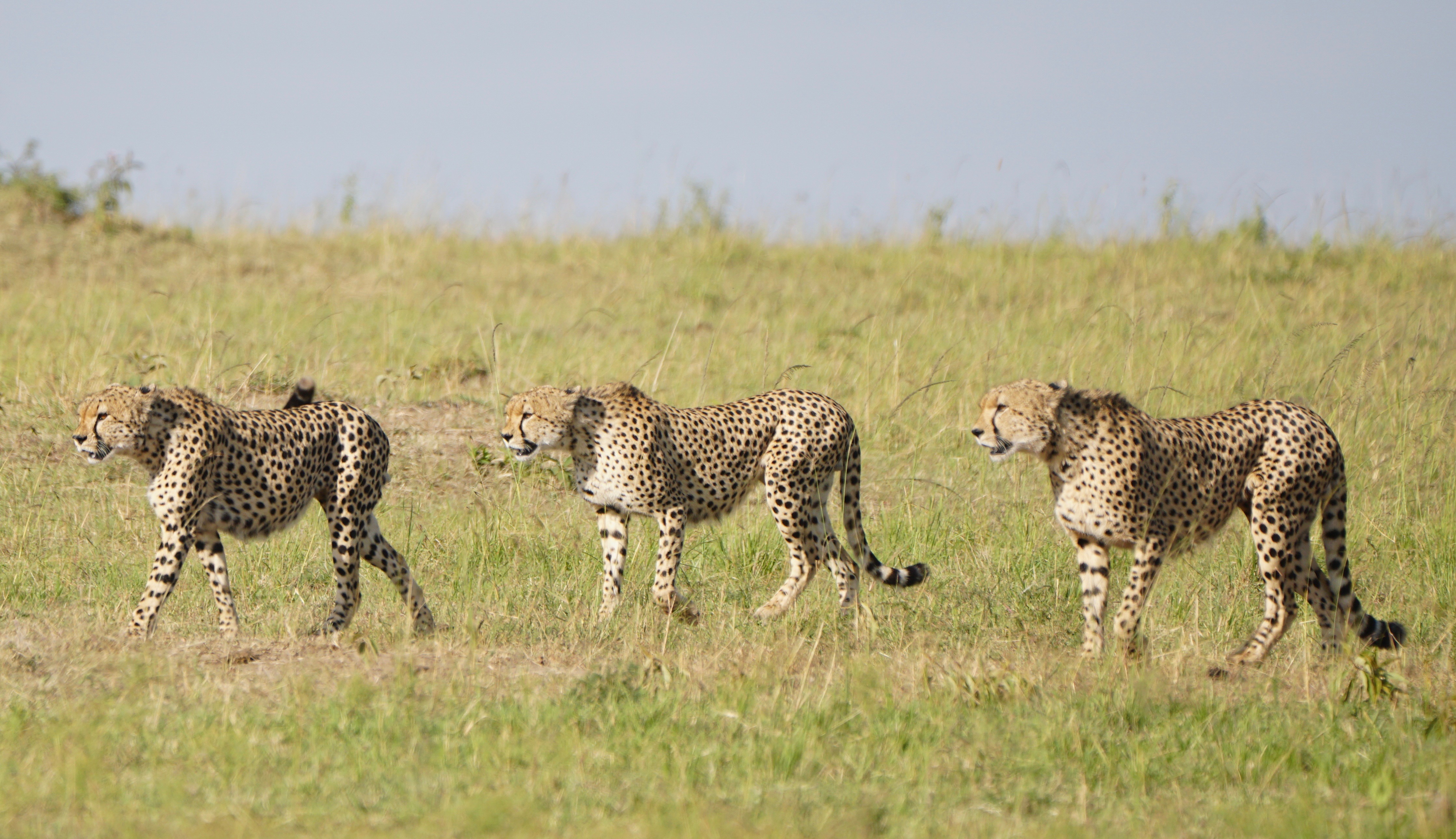
We are leaving Kenya behind, headed for new adventures in Tanzania. On the way to the airport, we spot a whole row of jeeps lined up along the edge of the road. The word is out…there are five cheetahs out in the open, making their way across the grounds.
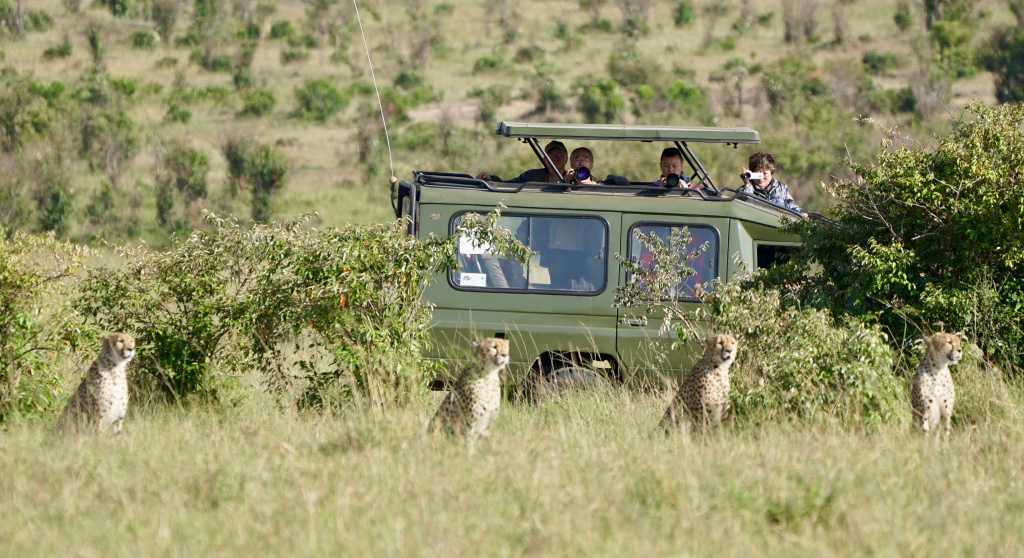
Cheetahs usually hide so it is quite rare to find them walking out, in full stride, in broad daylight. Our tour guide tells us that two are brothers from one family, two from another, and a fifth one is from a third family. The five of them have formed a coalition and work together to find food, hunt, and survive.
How does our guide know this? He says he has been watching these five cheetahs since they were three months old, and now they are five. The locals call them Tano Borah, which means The Fast Five in Swahili. It is amazing to just watch them walk…they are totally all lean muscle, completely built for speed.
The cheetah’s acceleration speed is legendary. They are the fastest land animals on the planet, able to go from zero to 75 miles per hour in less than three seconds, faster than the any race car. In the early 1900s, there were 100,000 cheetahs living in the wild; now, their numbers have dwindled to 7,100 with estimates to decline an additional 51% over the next 15 years according to National Geographic. These beautiful animals are seriously endangered, but how wonderful that they are here for us to see them in their national environment. If you are interested in learning more about helping the cheetahs at the Cheetah Conservation Fund at cheetah.org.
We have arrived in Tarangire National Park in Tanzania, named for the river that runs through it. It’s known for it’s high density of elephants and baobab trees, which are unique to this area. It’s also called the upside down tree because when it’s bare of leaves, the spreading branches of the baobab looks like roots, sticking up into the air, as if it were planted upside down.
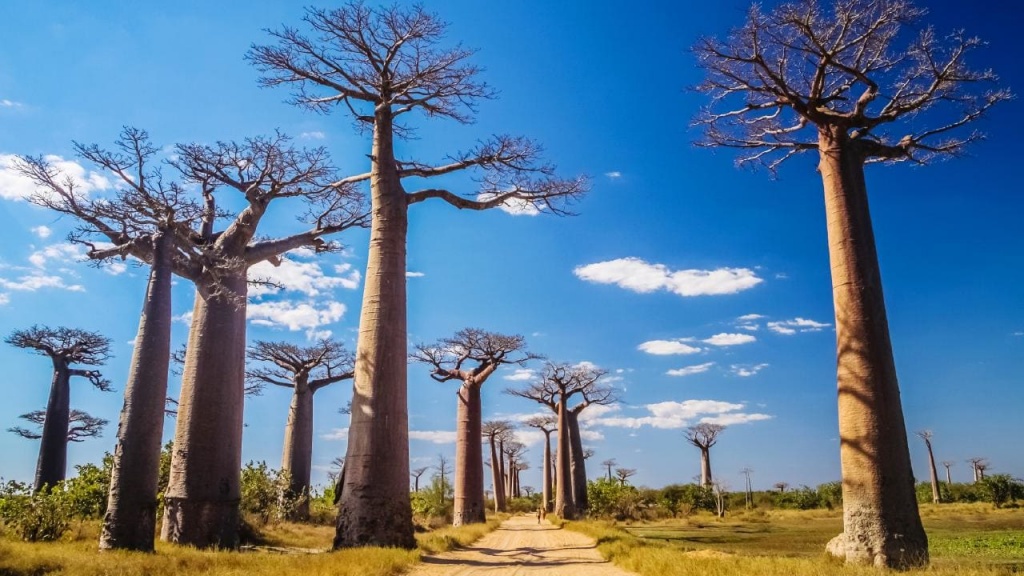
They are totally weird and strange, but totally fascinating.
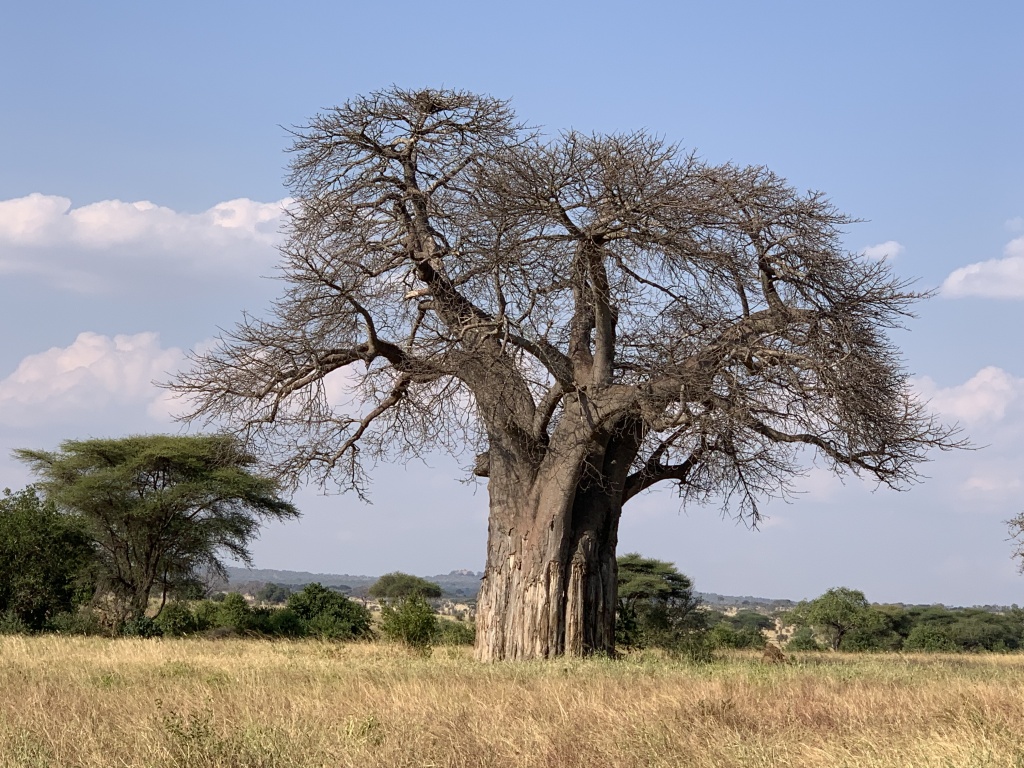
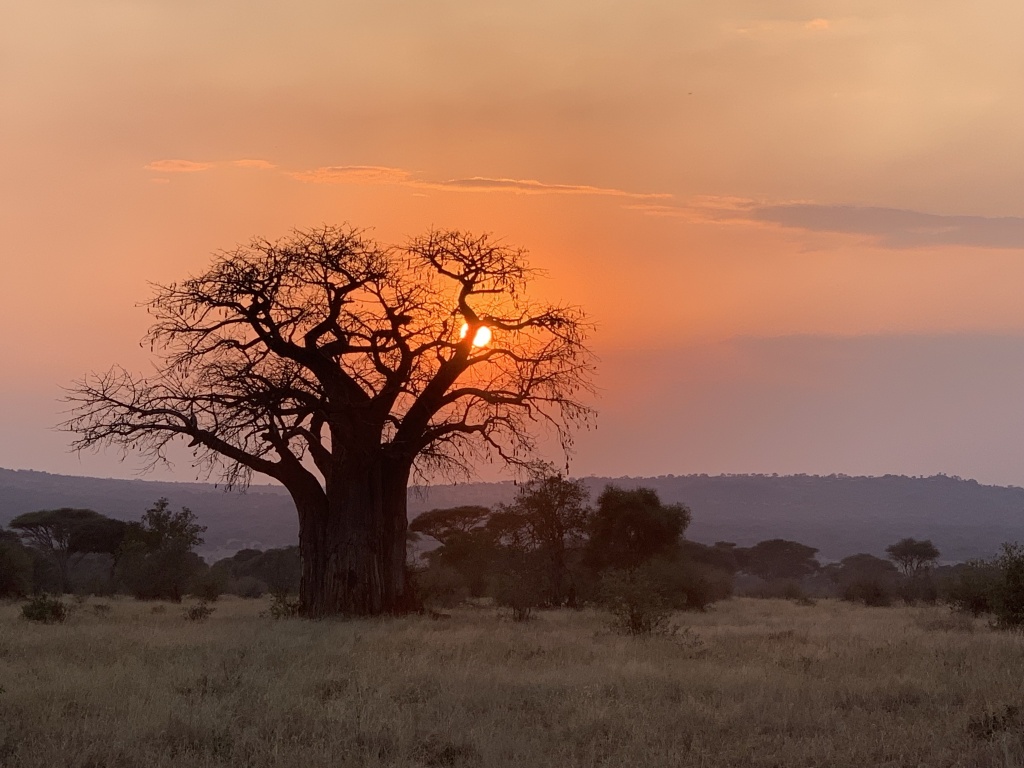
We are seeing families of elephants everywhere!
Have you ever wondered why elephants have wrinkles? Or why do they love to cover themselves all over with mud? These guys all look like they just came from a Napa Valley mud bath! Even though their skin is an inch thick, the mud protects them from the sun and from the biting insects. If their skin was smooth, like a dolphin, the mud wouldn’t stick! It all makes good sense.
We are in the park mid-afternoon and many of the animals are heading for shade over to get out of the sun.
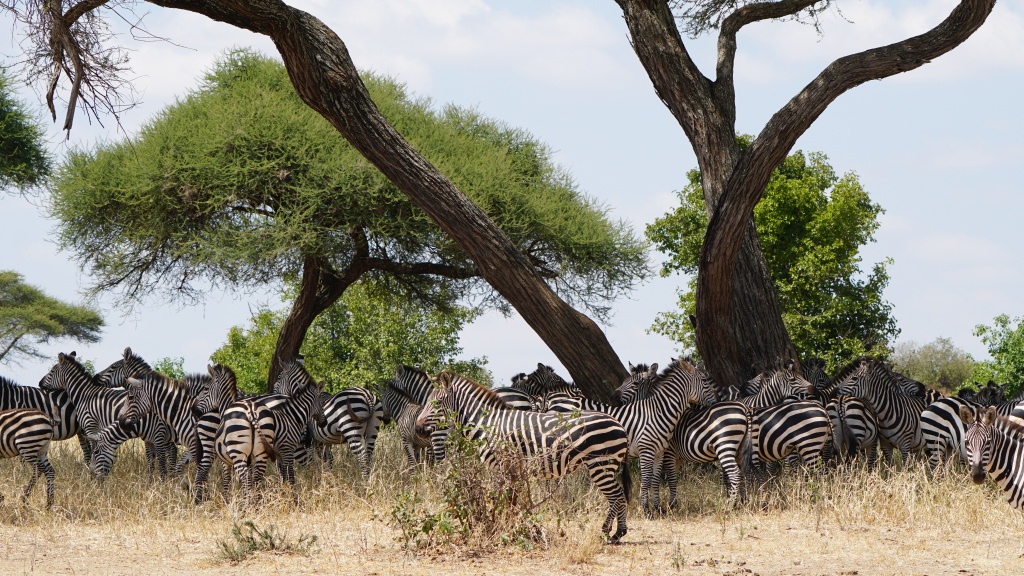
Do you ever wonder why zebras face in opposite directions when they stand in a group? The group confuses their predators so they can’t tell how many there are all standing together, and they face in different directions for protection.
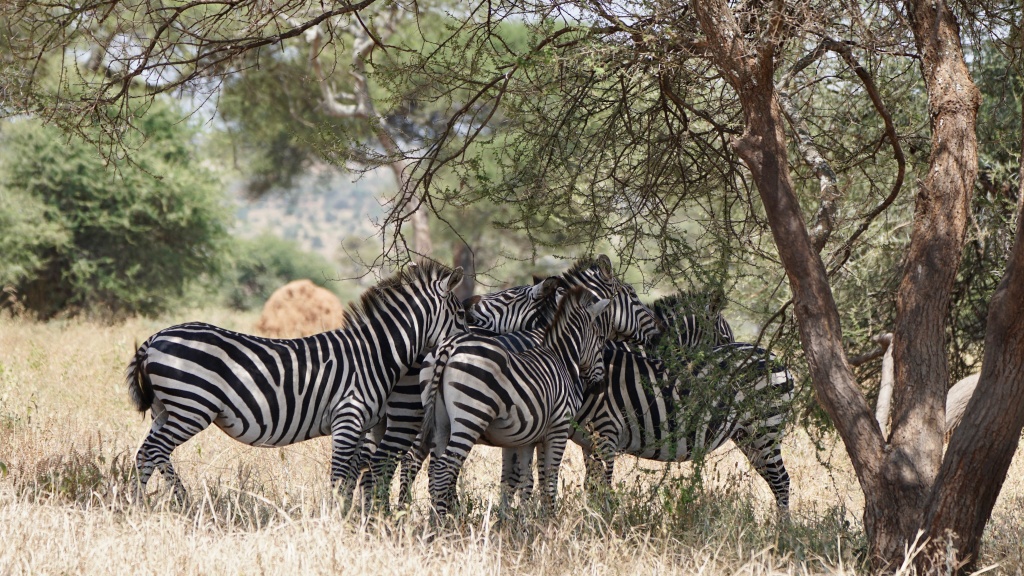
…and it’s so cute how they rest their heads one each other’s backs while protecting each other.
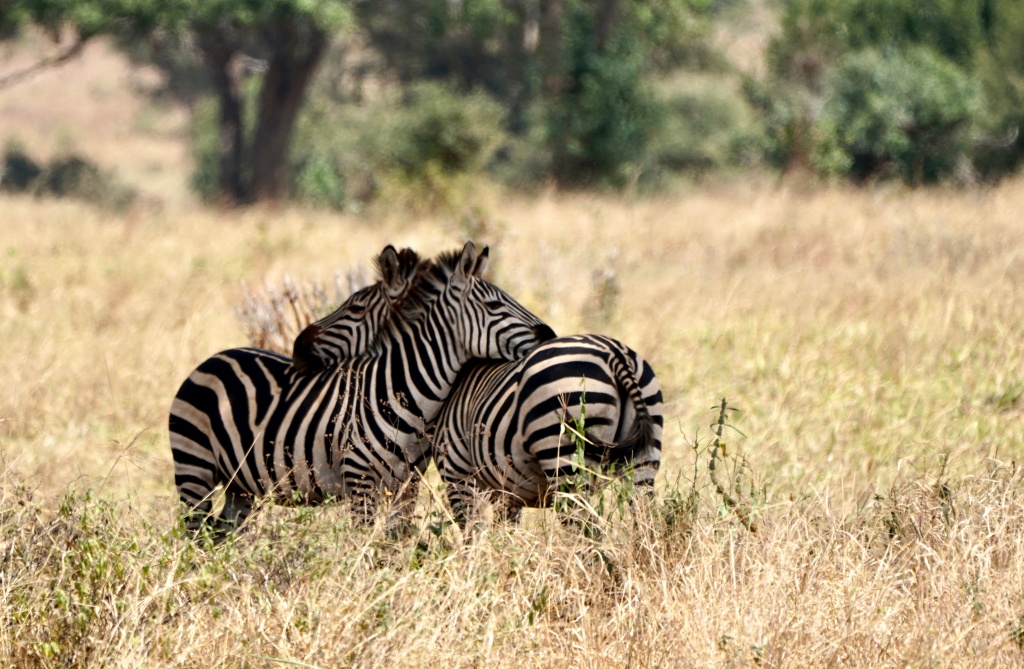
Another interesting fact is that grazing animals all have their eyes on the sides of their heads, so they can watch for predators while they are eating, whereas predator animals, like lions, leopards, and cheetahs, have their eyes on the front of their heads facing forward.
I always thought that ostriches lived in Australia, but it’s actually emus, a close relative, that live in Australia, while ostriches are here in Africa.
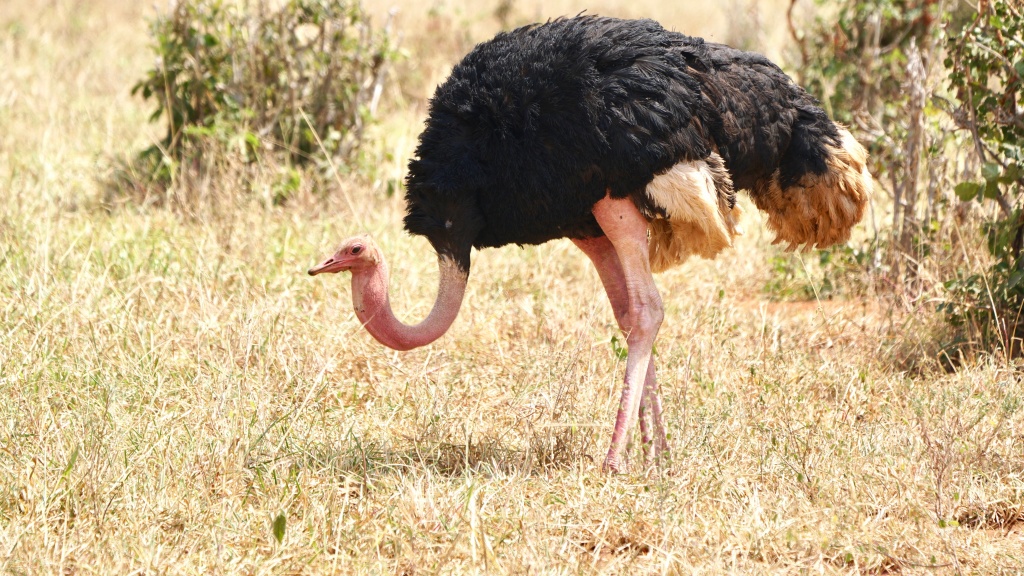
These flightless birds are a lot bigger than you think. They can be up to nine feet tall and weigh up to 340 pounds. Some have pink skin, others have skin that is blue. They can also run up to 45 miles per hour, and their long, powerful legs can cover 10-16 feet in one stride. Make sure not to make them angry as well since they also have a very powerful kick!
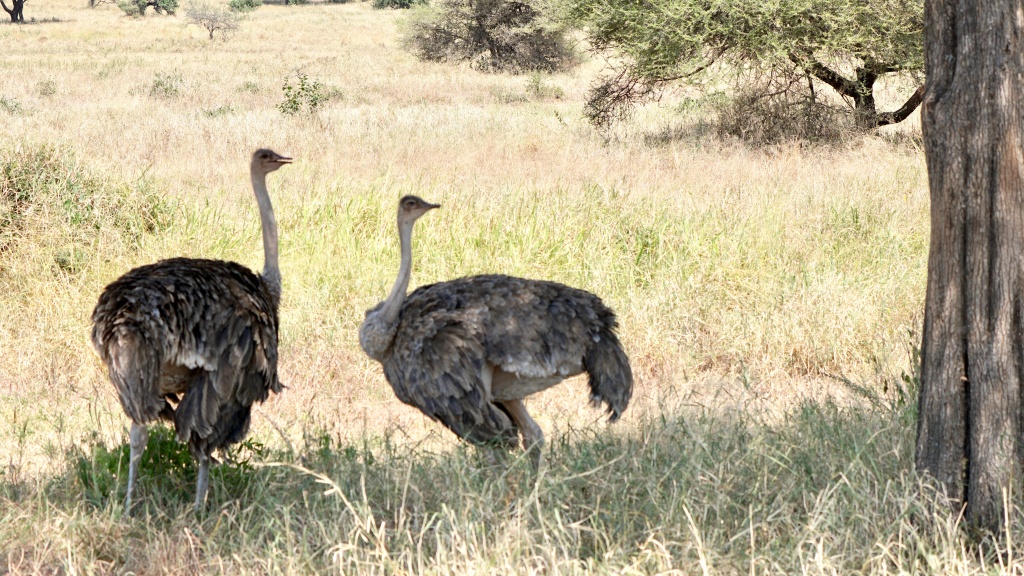
Tarangire National Park is also known for over 550 species of birds, most of which I have never seen, many of them are quite big, and in oh so many beautiful colors!!
The nests of the weaver birds are really interesting. There may often be more than 100 of them on the west side of a tree. The males build these intricate nests by weaving long blades of grasses to attract the females. If the girls don’t like the nest, they will tear it apart, showing that she’s just not that kind of girl and deserves a better place. The poor guys have to rebuild much better house for his intended. I guess even in the bird world, a girl always wants a nice place to live.
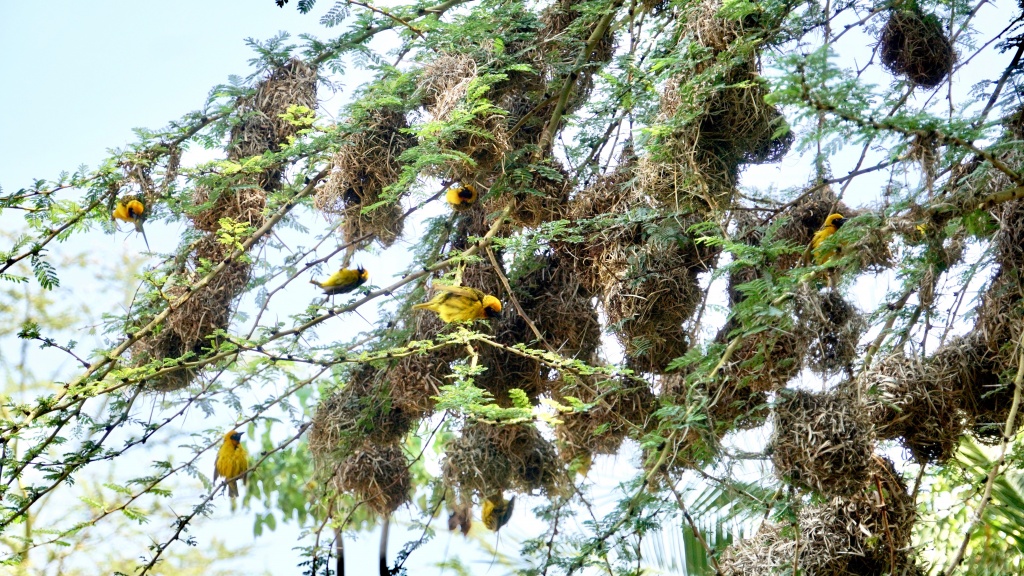
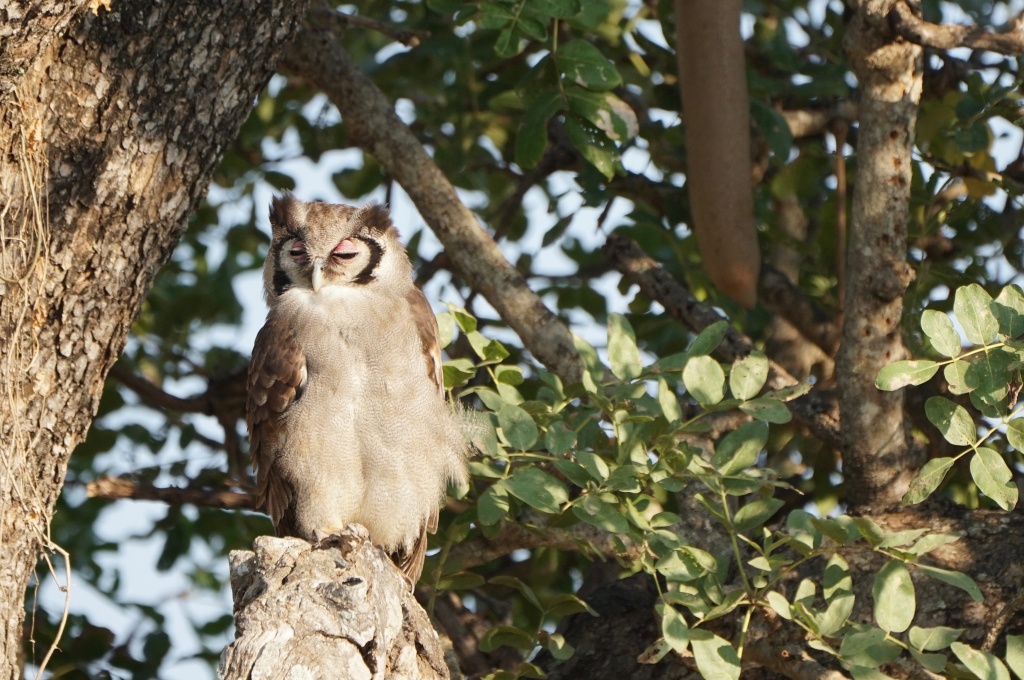
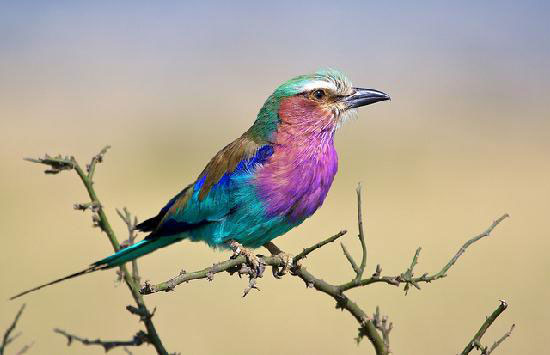
This Secretarybird below can be over four feet tall with a wingspan of 87 inches. Although he looks a bit like a crane with his really long legs, he’s a bird of prey, like hawks, owls, and falcons, eating small lizards, snakes, insects, and small mammals.
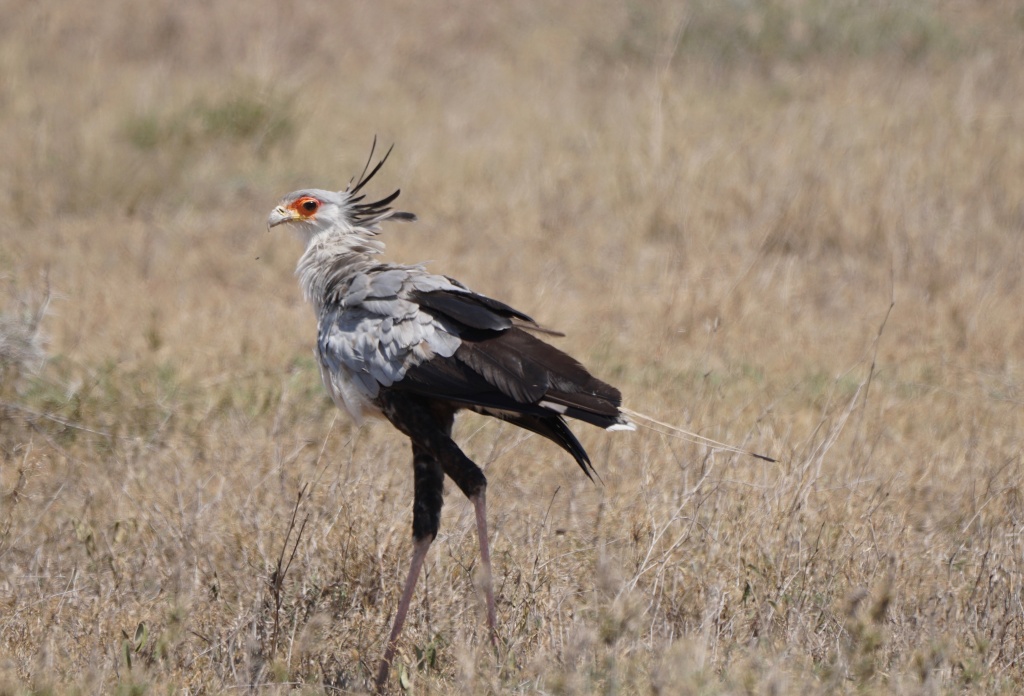
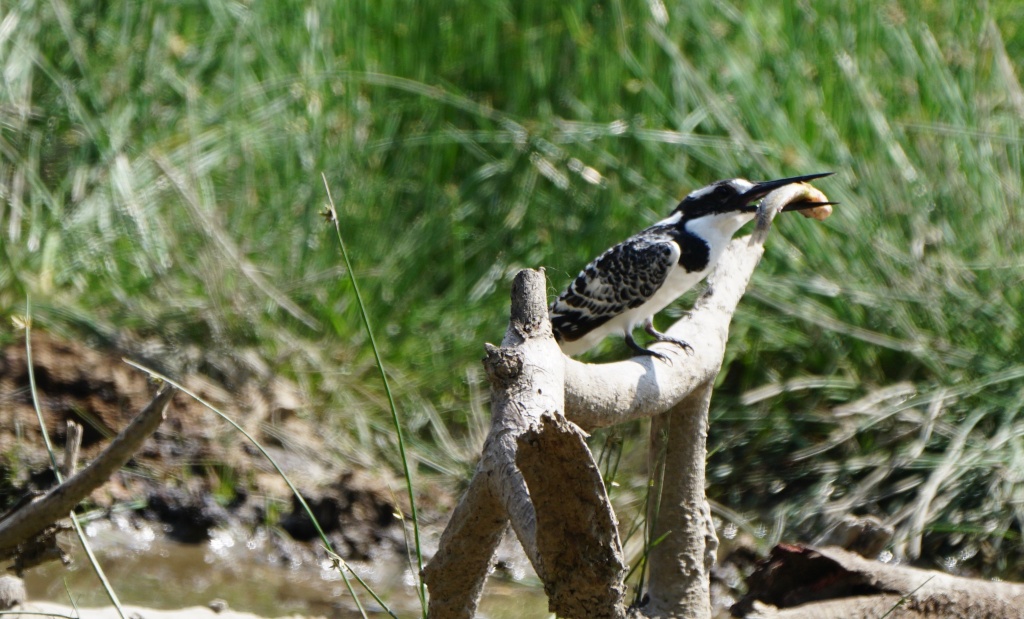
This bird, the kori bustard, is the largest flying bird in Africa, almost four feet tall with a wing span between seven to nine feet! They forage on the ground, mostly for insects like caterpillars, beetles, locusts, and grasshoppers.

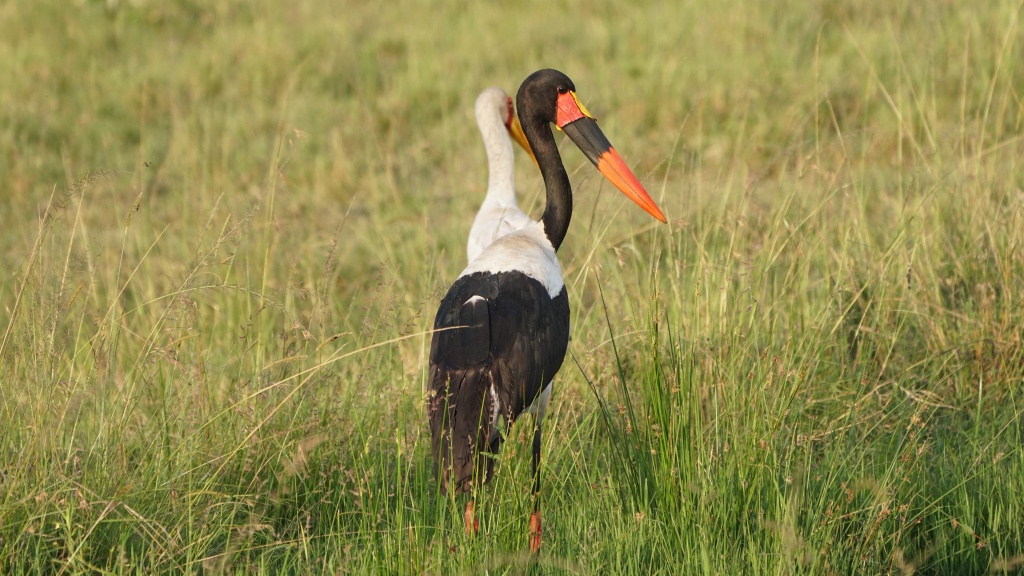
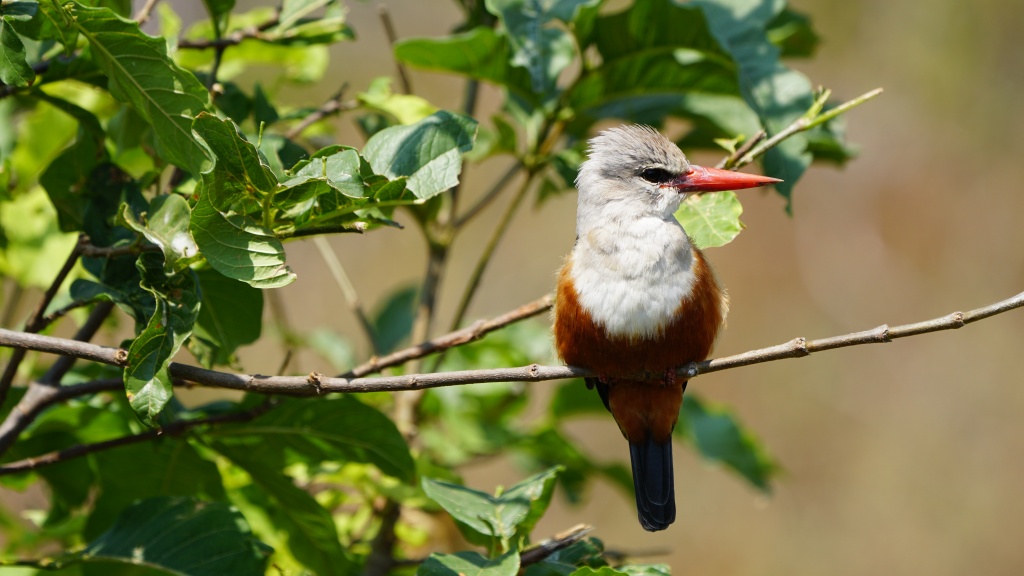
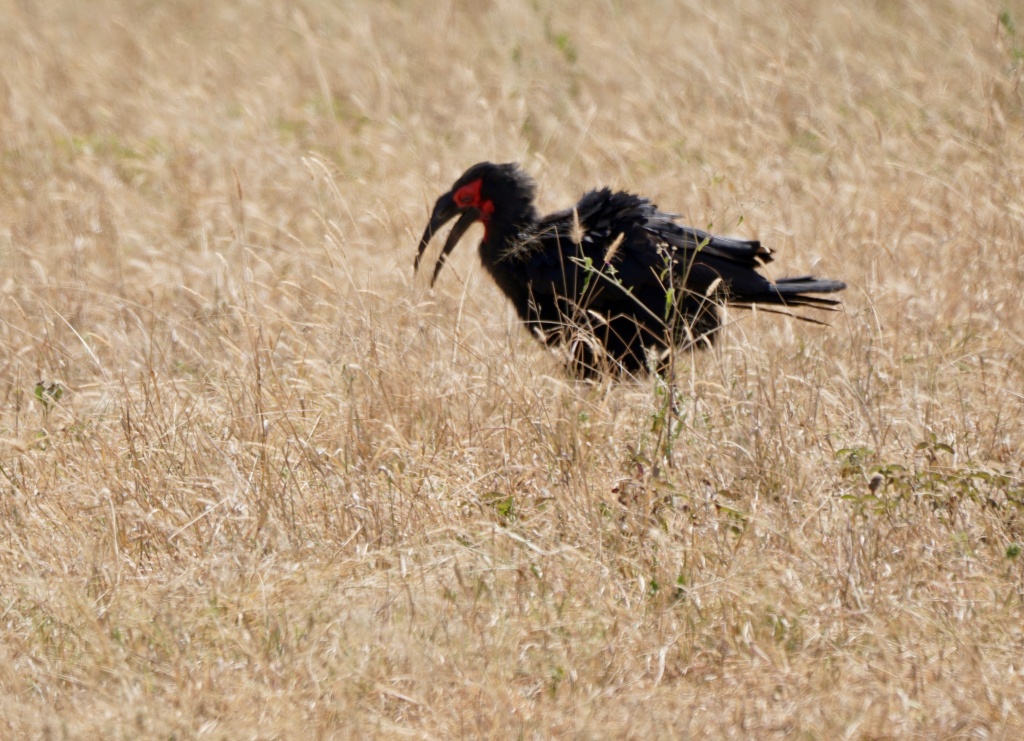
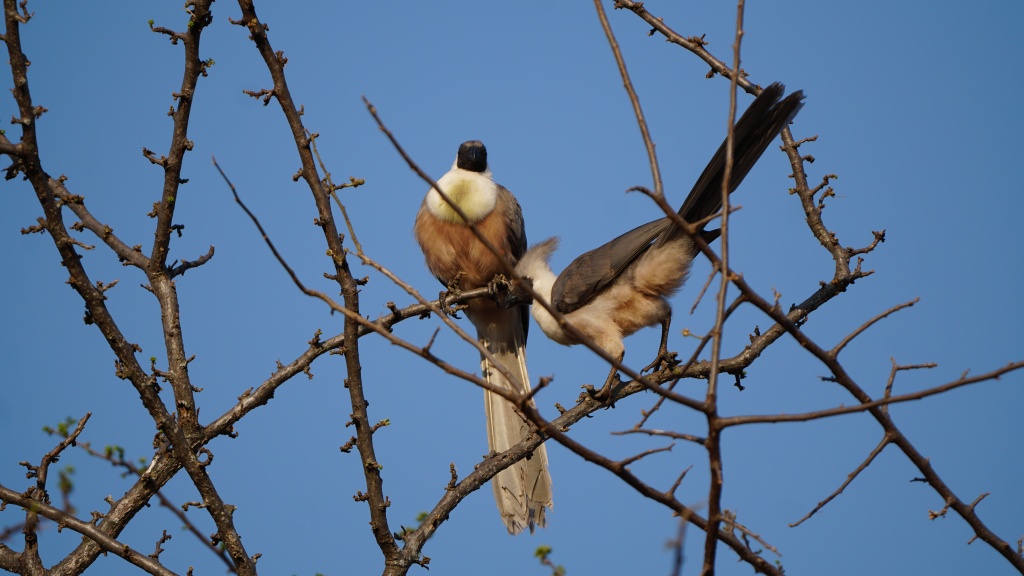
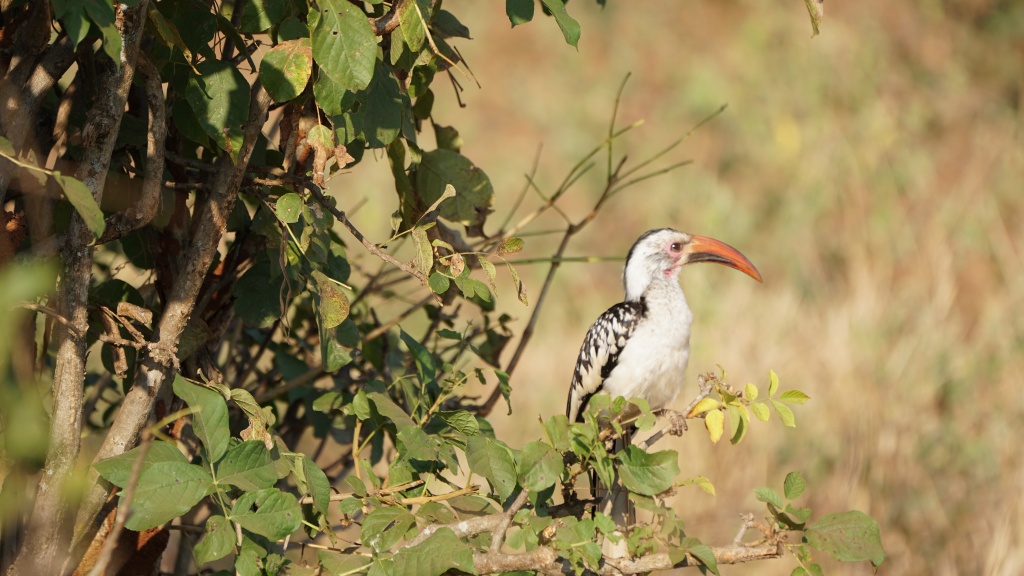
There are just so many fascinating things to see in the African savannah, and every day there are new surprises.
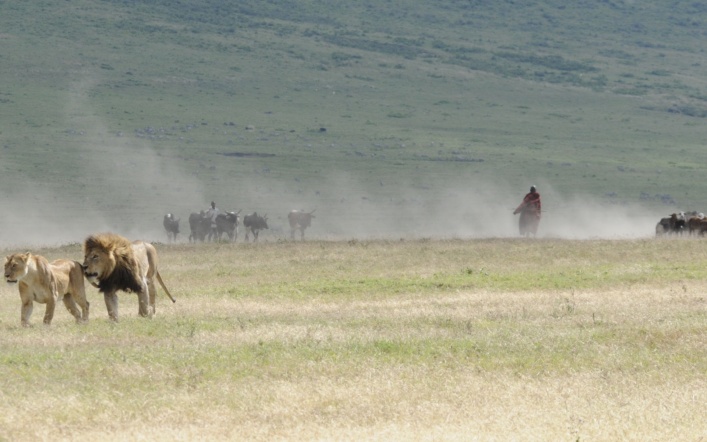
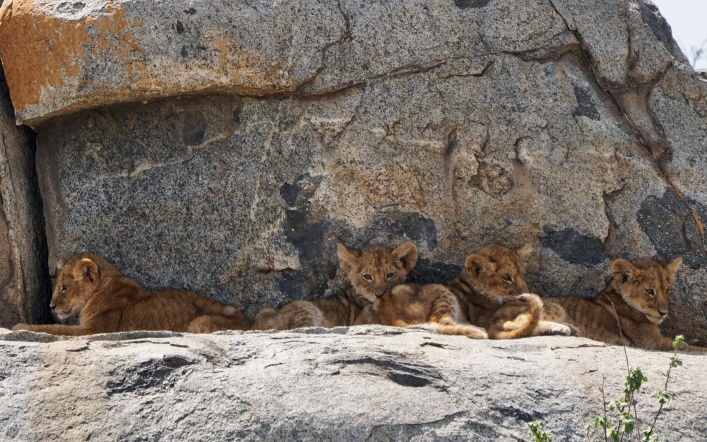
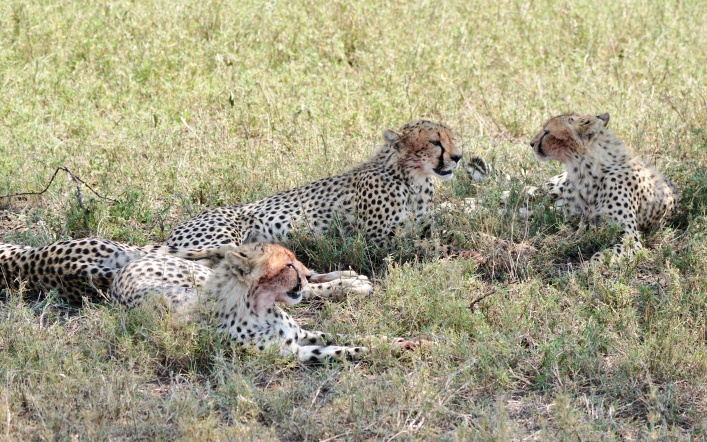

Monie, I am absolutely loving your blog! I leave in 2 weeks for Kenya and Tanzania and I can’t wait! Seeing those cheetas was amazing–that is one animal I am really looking forward to seeing.
Fran, So glad you’re enjoying the blog. It was an amazing trip. I know you will really love it.
Very beautiful pics Monie. They had definitely put this country in my priority list. Thanks so much for sharing.
Thanks Haydee! That’s high praise coming from another great photographer! Glad you’re following along.